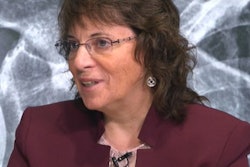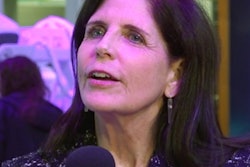
A woman's race and education level can significantly impact how they view the quality of mammography reports and how much they trust their radiologist, according to a talk at the recent Society of Breast Imaging/American College of Radiology symposium.
Researchers from Duke University Medical Center led by Dr. Lars Grimm surveyed 178 women receiving screening mammography at their institution over an eight-month period. Overall, Black women had lower satisfaction with the mammography report quality and were more likely to trust findings from an interpreting radiologist who was Black than they were if the radiologist was white.
"I certainly see this as a rallying cry to say that we need to get a more diverse radiology practicing population," Grimm said.
Unlike most parts of radiology, breast radiologists have a lot more face time with their patients, Grimm said. And with the 21st Century Cures Act, many patients are seeing their imaging results very quickly on patient portals. They are also often searching the internet for information on their radiologist.
"So patients are figuring out more about their breast radiologists than ever before," he said.
In their study, the researchers sought to determine what patient and radiologist factors influence perceptions of screening mammogram reports and the interpreting radiologists. They surveyed women receiving screening mammography at their institution between December 2020 and June 2021.
The researchers collected age, race, ethnicity, education, and insurance status information from the respondents. The participants were given five mock mammogram reports, which had BI-RADS 2 results and included a one-year screening recommendation.
Each of the reports also had a different picture of the interpreting "radiologist."
For the purposes of the study, the researchers selected photos of male and female and Black and white individuals in the age range of 40 to 60 and who were professionally attired. The photos, which were gathered from the internet, were normalized for attractiveness and age of the "radiologists," according to Grimm.
The patients were then asked seven Likert questions on their understanding of the mammogram reports and their level of satisfaction and trust in the report and the radiologist.
Of the 173 women who participated in the survey, 71% were white, 20% were Black, 5% were Asian, and 5% were listed as unknown/other. In addition, 52% had a college-level education, while 41% had postcollege education, and 7% did not have college education. The average age was 55. Nearly all had insurance.
After performing multivariate logistic regression analysis, the researchers did not find any associations among respondents for understanding the recommendation and report or that the report describes a suspicious finding. However, education (p = 0.02) and participant race (p = 0.043) were associated with being satisfied with the quality of the report.
"People who had much less education were far less likely to agree that they were satisfied with the quality of the report," he said. "And when we look at race, Black participants were far less likely to say they were satisfied with the quality of report as well."
No significant associations were found, however, for opinions on recommending the radiologist who created this report to their friends. There was a significant association, though, for participant race and radiologist race (p = 0.037). Black participants had a higher trust in the report findings if it was produced by a Black radiologist.
Patients with postcollege education were much more likely to say that the radiologist cares about their patients, and this agreement declined with lower levels of education. There was no association, however, between radiologist gender or age, according to Grimm.
In addition to showing the need to engage better with patients and have more meaningful conversations that can build trust over time, the data also suggest that a better job could be done for recruiting a more diverse radiologist workforce, according to Grimm.
"That's going to allow us to make stronger inroads with some of these patient populations for which we don't have as much trust," he said.




















